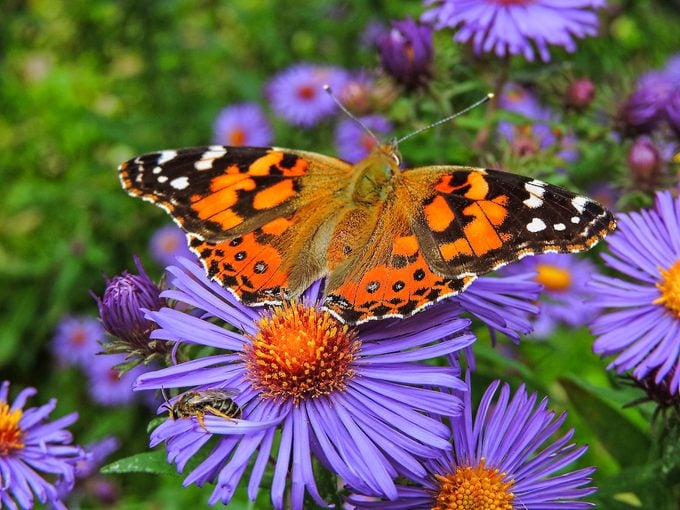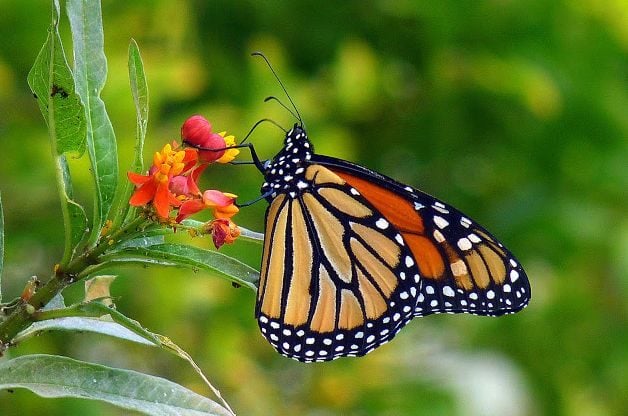5 Essential Fall Butterfly Garden Tips
Updated: Dec. 20, 2022
Butterflies overwinter in a variety of ways. Help butterflies get ready to handle the cold weather with these butterfly garden tips for fall.

As temperatures shift and you begin to prepare for the cooler months ahead, butterflies are beginning to do the same. Depending on the species, butterflies spend the winter in a variety of ways. Some overwinter as adults, tucked into rock crevices or tree bark. Others survive as eggs, larvae, or pupa by hiding away in leaf litter or soil. And some undertake migratory journeys to avoid the cold altogether. These essential fall butterfly garden tips will help ensure your garden keeps butterflies safe in the months ahead.
Learn more about butterfly seasons with the year-round guide to butterflies.
Plant Late Blooming Flowers
Butterflies that overwinter as adults will need food right up until cold weather reaches your area consistently and they enter hibernation.
Mourning cloaks are even known to wake up on mild January days and look for food. So add late-season nectar plants like aster, goldenrod, and ironweed to your garden. This will also help migrating monarchs keep their strength during their long journey south. In southern zones, try pineapple sage for cool-weather butterflies.
Check out the top 10 fall blooming perennials for your garden.
Fallen Fruit Helps Butterflies, Too
Late-season butterflies often prefer fruit to flowers. Leave fallen apples or peaches on the ground or allow them to stay on the tree to provide a food source for these butterflies until winter truly arrives.
Attract butterflies with late blooming asters.

Cut Back Non-Native Milkweeds
Monarch butterflies need milkweed to survive, and recent programs have focused on adding large amounts in their migration corridor from Texas north to Canada. In some areas, though, non-native milkweeds (especially Asclepias curassavica, tropical milkweed) have been added, which continue to grow after summer ends. Recent discoveries indicate the presence of these milkweeds may actually stop migrating monarchs in their tracks, causing them to stop to mate and lay eggs rather than continuing south. The caterpillars that hatch from these eggs will be caught by cold weather and die. If you live in the migration corridor, begin cutting back your non-native milkweeds to the ground by September to encourage monarchs to simply pass through on their way to Mexico for the winter.
Discover fascinating monarch butterfly facts.
Leave Leaf Litter Alone in Your Butterfly Garden
Many butterflies and moths use leaf litter to overwinter. Coral hairstreaks lay their eggs at the base of their host plant in the fall; the eggs hatch in the early spring when new growth begins on the plant. Red-spotted purple caterpillars crawl down to shelter in leaf litter beneath their host trees. Many moths pupate just under the soil and wait for spring. When possible, leave leaf litter and plants that have died back in place until spring, rather than stripping your yard bare in the fall. This will allow these butterflies a place to spend the winter.
Check out beautiful butterfly pictures you HAVE to see.
Brush and Rock Piles Matter to Fall Butterflies
Butterflies that overwinter as adults seek safe shelter in cracks between rocks or loose bark. Rock and brush piles can provide ideal locations.




















